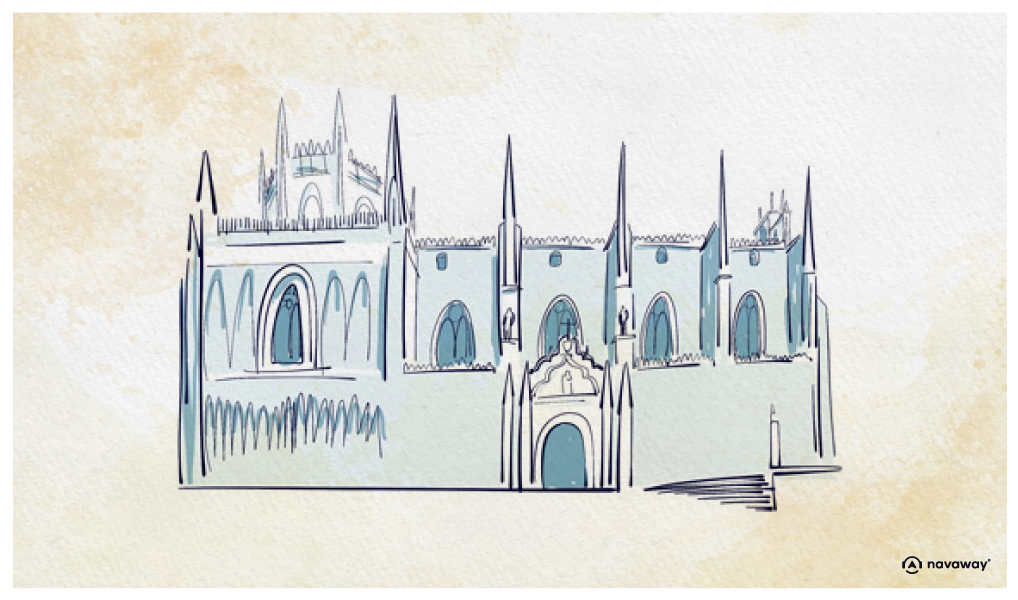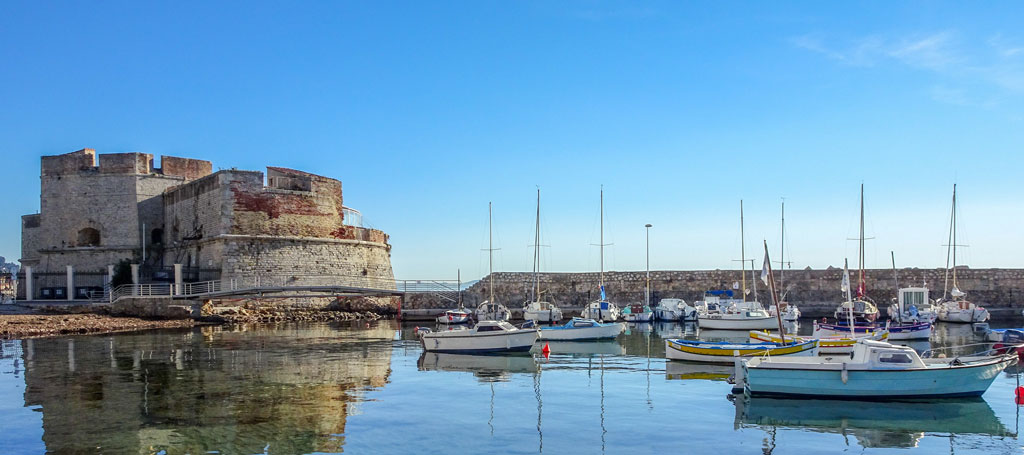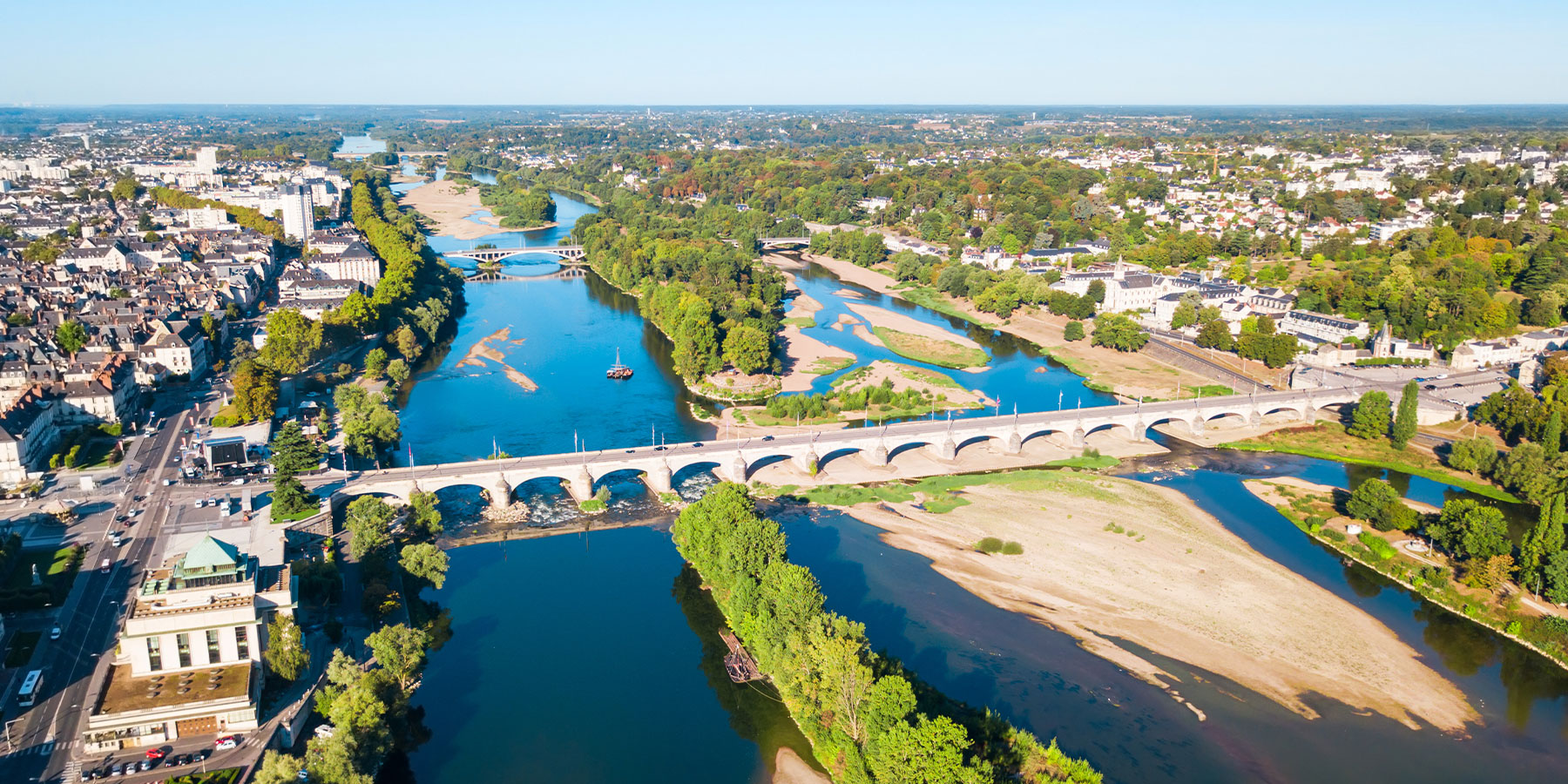
Monastery of San Juan de los Reyes

This point of interest is available as audio on the tour: Visit Toledo, A gem by the Tagus River
As you arrive in front of the imposing façade of the Monastery of San Juan de los Reyes, you immediately catch on that this place means business! Even though the exterior doesn’t reveal much, you can tell the interior hides something greater. An entry fee is required, but I highly recommend stepping through its heavy doors. Inside, once you sense the monastery’s cool and austere beauty, you’ll quickly understand how powerful the Catholic Monarchs actually were. This monastery was commissioned by Isabella of Castile and Ferdinand of Aragon to commemorate their victory at the Battle of Toro—a decisive moment in the Castilian succession war against Portugal. It was also created to celebrate their son’s birth, Prince Juan, and was originally intended to serve as their royal mausoleum. However, you won’t find their tombs here as they finally chose Granada as their resting place. This building is one of the finest examples of Isabelline Gothic and stands as the most important structure commissioned by the Catholic Monarchs. Construction lasted nearly fifty years, during which architect Juan Guas created a masterpiece filled with decorative details that will capture your attention at every turn. As you explore the monastery, you’ll discover unique artistic elements that showcase the remarkable craftsmanship of that era. While the dominant style is Gothic, you’ll also notice classical elements, Flemish ornamentation, and beautifully crafted mudéjar wooden ceilings. The cloister, dating from 1510, is a precious gem of Spanish Gothic architecture transitioning towards Renaissance. This two-level square cloister has been meticulously restored since, making it a pleasure to explore. Visiting the Monastery of San Juan de los Reyes is an essential stop on your Toledo tour, officially listed as a Spanish Property of Cultural Interest. Now, back to historical facts: let’s not underestimate the importance of The Catholic Monarchs. Their reign is often said to be the transition between the Middle Ages and modern era. If the name doesn’t ring a bell, know that their marriage united the crowns of Castile and Aragon, paving the way for the Spanish monarchy. They ended the Reconquista by conquering Granada—the last stronghold of Muslim rule in Al-Andalus, from which modern Andalusia takes its name. Their devotion to religious unity earned them the title of Catholic Monarchs by the Pope, though that came at a heavy cost. They enforced conversions, expelled the Jewish population in 1492, then the Muslims ten years later—giving rise to the infamous Inquisition. You’ve probably recognised that date, as it was during this same period that the Catholic Monarchs funded Christopher Columbus’s voyage to find a trade route to the Indies. You know what follows. The European encounter with the Americas changed the world and made Spain a global power. The Catholic Monarchs also secured alliances across Europe by marrying their five children to powerful princes—linking themselves to the mighty House of Habsburg. Their daughter, known as Joanna the Mad, married Philip of Austria, giving birth to their son Charles I of Spain. He’s also known as Charles V of the Holy Roman Empire, the most powerful monarch during the first half of the 16th century. Heir to four dynasties, he ruled over so many lands that I’m unable to count them. So yes—Isabella and Ferdinand weren’t just important. They were foundational. And with this visit, you’ve just stepped into a major chapter of Spain’s history.


Discover Toledo with app
An interactive guide through the most beautiful streets, squares, and districts
24 fun audioguides full of historical facts, anecdotes, and legends





Comments